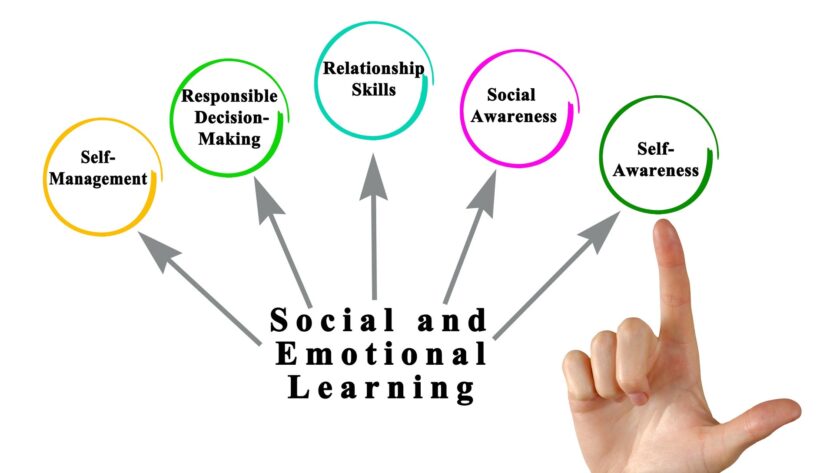How Social Learning Affects Substance Abuse
Introduction
This paper will analyze the role of social learning in the development of substance abuse and substance dependency in young adults. It has been proposed that children with parents suffering from substance abuse disorders are far more likely to develop similar disorders themselves (Biederman et al., 2000). This research will determine the critical variables which contribute to a young adult’s likelihood to develop a substance abuse dependency. The research will also study the effects of raising a child in a household which offers a parent suffering from a substance abuse disorder. In essence: what are the effects of raising a child in a home which exhibits parental substance abuse? Additionally, what is the social learning influence in terms of primacy on developing a substance abuse disorder?
The concept of primacy is extremely relevant in terms of social learning and substance dependency as it is notoriously more difficult to “unteach” first impressions. The impressions which are proposed through parental social learning are perhaps one of the toughest to overcome, as parents are frequently considered an individual’s first source of role model. If an individual’s first experiences with substances and substance abuse are formed from interactions or experiences with their parents, negative substance habits are much more likely to be formed. In fact, some studies propose that a child exposed to parents suffering substance abuse are up to 4 times more likely to develop a similar addiction and dependency (Anda et al., 2002). In effect, this research hypothesizes that primacy through social learning in a household is suggested to most certainly increase a child’s likelihood to develop substance abuse disorders later in life.
Discovering the risk factors for a child developing SUDs from primacy experiences is one of the first steps in the control and intervention process. While primacy experiences are very difficult to unlearn, it is reasonable to weave these identification and intervention processes into a child’s early experiences with educated effort and action. It is also extremely useful to thoroughly understand demographic and cultural differences in the development of SUDs, and various types of SUDs, in order to achieve the most effective treatment and intervention processes.
Literature Review
Article 1: Passing SUDs from Parental Other significant Family Influences to Children and Adolescents

Many studies exist which examine the risk factors for children in developing SUDs or substance abuse from being exposed to parental or familial SUDs. One study outlined two groups of children, their siblings, and their parents, attempting to predict the development of SUDs in the offspring. This study homed in on what was defined as the “critical development period” and determined an adolescent’s experience to be the most influential stage which resulted in developing SUDs through home-life social learning (Biederman et al., 2000). The adolescent period is an important developmental stage as it is the time a child attempts to begin their journey to forming identity (also making the primacy of their social learning experiences at home extremely relevant and important). This study determined there was a definite ability to predict SUDs in offspring based upon their exposure to risk factors in the familial environment (2000).
Article 2: Differences in the Development of SUDs Between Genders and Other Demographics
In more than one case, social learning through primacy experiences in a household prove to be strong influential variables in developing SUDs of all types. This is especially true when it comes to alcohol and marijuana, as shown in research studying a group of juvenile offenders (Neff and Waite, 2007). It does appear (however insignificant) that there is a difference between the developmental progress of SUDs between offspring genders. In other words, this study has highlighted a slightly higher significant risk factor for male juveniles (2007). Even still with this limitation it is obvious that primacy experiences presented through social learning from family members and peers early in life are some of the strongest influences in adolescent SUDs, and the development and continuance of substance abuse later in life. The study draws information from 4846 male and 576 female juveniles listed within the Virginia Department of Juvenile Justice and includes narrative clinical reports and Youth Profile data forms (2007). An independent samples t-test evaluated the mean values for male and female juveniles using four dependent variables and determined a definite increase in risk factor for these juveniles in developing SUDs, even moreso for juveniles with a family history of drug or substance abuse (2007).
Article 3: Analyzing Risk Factors for Adolescent Development of SUDs and Qualification Material
Another study outlined several risk factors which increased adolescent substance abuse and the development of SUDs in young adults. This study included a national household probability sample of 4,023 teens aged from 12 to 17 years (Kilpatrick et al., 2000). The risk factors analyzed included adolescents whom (a) were physically assaulted, (b) sexually assaulted, (c) had witnessed violence, or (d) had family members with alcohol or drug use problems. The participants in the study were each interviewed by telephone. Their parents were interviewed as well (separately). There were approximately an equal number of male and female participants interviewed. A multistage, stratified, area probability, random digit dialing, and six-step sampling procedure was used to collect the data. The participants also needed to meet the DSM-IV for substance abuse and dependence to qualify. While there were many other variables which may impose some limitations on any concrete, generalized results, it is obvious that social learning through the experiences with substance abusing family members played an integral role in the development of substance abuse and dependence in the affected teens (2000).
Article 4: Substance Abuse Disorders and Learning Disorders

A study that focused on the connection between adolescent substance abuse and learning disabilities was able to make another connection between the increased likelihood of dependence and SUDs when a parent suffers SUDs (Weinburg, 2001). This study offered a few new insights, including the increased risk of offspring dependency issues arising from antisocial parents. In essence, the parent does not even have to have SUDs themselves, but only exhibit antisocial behavior to increase the risk their offspring will develop SUDs. A variety of data was analyzed in this study to determine this increased likelihood, including: conduct disorders, ADHD development, executive cognitive function, academic failure, self-esteem, and deficits in social skills. The resulting data has well-indicated that when children are exposed to parental substance abuse, primacy experiences through social learning make it much more likely the child will also become afflicted with these syndromes themselves (2001).
Article 5: Environmental Risk Factors Massively Increase SUDs Development Likelihood in Adolescents
Despite many risk factors existing for the development of SUDs and substance abuse dependency in adolescents, environmental factors are still one of the heaviest influences (Hicks et al., 2014). This is true in terms of adolescents who are exposed to parents and family members who exhibit substance abuse problems, as well as peers. One large, longitudinal study focused on twins and several environmental factors in the development of adolescent substance abuse. This study revealed that low socialization, exposure to antisocial parents and family, and the primacy experiences of parents suffering SUDs all contributed to an increased risk factor of adolescent substance abuse (2014). This study also revealed long-term psychosocial impairment, academic failure, and a variety of other negative outcomes which were also attached to these unfortunate developments (2014). This research further proves that the early experiences of a child during their cognitive development and adolescent years are imperative in creating a fulfilling and happy lifestyle throughout adulthood.
Article 6: Intervention of PTSD and Substance Abuse Development in Children
A recent study has outlined the association of many risk factors of developing opioid abuse disorders in children and possible intervention of these disorders and PTSD. This study has determined some of the most prevalent risk factors to include maltreatment, elevated impulsivity, and psychopathology (Mirhashem et al., 2017). The study has outlined the apparent connection between all these risk factors and behaviors in the overall development of PTSD as well. Additionally, the development of PTSD as a child appears to be directly related to the increased likelihood of seeing some sort of substance abuse disorder in one’s lifetime (2017). This study included 84 participants who suffered from a variant of opioid-related substance abuse disorder (heroine, methadone, or misuse of prescription opioids) at or below the federal poverty level. The Childhood Trauma Questionnaire (CTQ), a 28-item self-assessment exam which covered five areas of negative childhood experiences, was used to determine participants responses and their corresponding level of substance abuse. This research irrefutably proved a sincere connection between childhood trauma and substance abuse disorder dependency later in life (2017). These early experiences of primacy are extremely impactful on the growing mind of a child or adolescent, and are arguably undoable experiences without proper intervention early on (2017).
Discussion
This research is relevant to the more thorough understanding of how substance abuse is developed from an early age. The data examined in this study can provide useful information for intervening in the early development of many SUDs and help parents form better primacy standards for healthier social learning within their households. It can also assist psychologists and other healthcare professionals in achieving higher standards for intervention before serious SUDs are developed in young adults. Since social learning and primacy material is such a prevalent source of behavioral adaptation in children, the evolution of this research can provide a higher quality of living to many affected individuals from an early age.

Independent components of this research show that understanding the mechanics of the development of SUDs can be directed towards (and include) both risk factors and demographic variables. Demographic variables such as gender, age, cultural history, environmental details, and peer relationships can make a significant difference in the likelihood of developing SUDs. For example, a child with many older siblings of the same gender afflicted by SUDs might be more likely to develop SUDs, whereas a single child with no sibling influences and a single parent of the same gender with no SUDs affliction could be less likely to become afflicted themselves (Kilpatrick et al., 2000).
Interestingly, other members of the family and parents themselves are dramatically affected when an adolescent suffers from substance abuse (Smith and Estefan, 2014). When an adolescent or child develops SUDs early on and suffers the impact of the affliction in their developmental period, parents and siblings are further negatively influenced themselves. That is, family members of children suffering from SUDs are more likely to exhibit SUDs-related tendencies and behavior. This is even true if the family member or parent themselves were the initial influence which provoked the development of SUDs in the child (2014).
Future research on these topics might reveal better methods for early parenting techniques. It can also evolve the methods by which psychologists and healthcare professionals treat parents suffering from SUDs and their children before primacy forms more concrete habits in the child’s developing brain. Future studies in this area could focus on the early effects of a parent’s substance abuse on their child’s cognitive functioning. In other words, better understanding how a child’s memory, psychomotor processing, or executive functions are formed when experiencing a parent’s substance abuse can lead to better intervention techniques. And this research shows that an effective intervention process can most certainly lead to complete prevention of developing SUDs later in life.
Conclusion
So many studies and research support the theory that adolescents are more likely to develop substance abuse and SUDs when exposed to early social learning experiences involving substances. This is especially apparent when adolescents receive primacy experiences from parents and family members who suffer from SUDs and substance abuse (Tarter, 2001). Research has shown this theory easily extends to include the influence of peers, celebrities, environmental, and cultural impacts early in life as well (Anda et al., 2002). Each study included in this compiled research contributed to confirmation of the development of substance abuse and/or dependence in adolescents stemming from social learning and primacy, parental experiences. The earlier experiences of an adolescent are sincerely influential components of a healthy cognitive development and the avoidance of dependency issues, especially in terms of substance abuse.
It is worth mentioning that the development of SUDs can lead to many other abnormalities within an adolescent’s cognitive development process. These abnormalities can include learning disabilities, PTSD, irritability, and impulsivity (Mirhashem et al., 2017). The cycle which can persist from the transference of any of these risk factors, or a substance abuse disorder itself from parent to offspring is one of the most lasting influences in a child’s life and can be extremely difficult to undo (Biederman et al., 2000). Fortunately, intervention techniques have been evolving alongside these studies, and it is now reasonably possible to entirely prevent the manifestation of SUDs in adolescents with the appropriate risk factor identification and action methodology (Mirhashem et al., 2017).

Many clinical trials exist across diverse family structures which have proven intervention techniques possible (Liddle et al., 2004). Usually, these treatment techniques include a variety of group therapy and community drug treatment therapy sessions. These sessions include multiple members of the same family, including the adolescents and parents or peers afflicted by substance abuse or substance abuse tendencies (2004). However, it is notable that most of the studies supporting these treatment techniques focused specifically on families with teens or adolescents who already developed SUDs, rather than attempting to prevent undeveloped SUDs via risk factors or symptoms (2004).
It appears that family therapy is the most effective treatment method across the entire spectrum of intervention techniques available to help adolescents and families with teens affected by SUDs (Tanner-Smith, 2013). In fact, dozens of studies can be analyzed in meta research which supports the concept of using family therapy to improve the conditions, reduce risk factors, and eliminate the development of SUDs (2013). Admittedly, these studies may include a variety of family structures, substance abuse disorders, and environmental backgrounds. Additionally, longer treatment durations almost always resulted in more successful treatment outcomes (2013).
Children are also more susceptible to adopting the mannerisms, practices, and behaviors of peer and parental influences which share demographic similarities (Neff et al., 2002). While females seem slightly less likely to develop SUDs and corresponding traits or tendencies altogether, males appear to be very vulnerable to adopting the tendencies of their male role models. This is especially true for a male with a father figure suffering from some form of SUDs or SUDs-oriented tendencies (2002). This imitation phenomenon is further amplified when there are instances of violence or abuse within a household (Kilpatrick et al., 2000). Unfortunately, experiences of sexual abuse pose an even greater threat to the development of SUDs in a child or adolescent (2000). Furthermore, the younger the individual is during the experiences of violence or abuse, the greater the likelihood of the development of SUDs and the less likely the development can be susceptible to successful intervention techniques, treatment plans, or practices (Tarter, 2001).
Assessment of Research Paper Writing Process
Ultimately, it is entirely possible to track the risk factors of the likelihood an adolescent may develop SUDs through primacy experiences. These risk factors largely include family and peer influences, environmental influences, genetics, cultural influences, and demographic details. Placing the risk factors in easy-to-follow categories can help researchers and healthcare professionals better identify a child’s likelihood of developing SUDs. This is especially true while a child is in their years of critical cognitive development. The many studies which outline the specifics of how SUDs can impact an adolescent’s growth and development (or lack thereof), are infinitely growing and create a new hypothesis which might state it is impossible to ignore the risks.
Following through on intervention techniques can most certainly divert a child from developing serious inadequacies later in life, from learning disabilities, to almost undoable substance abuse dependencies. These studies also appear to collaboratively indicate that the development of SUDs in a child means an inevitable cycle will persist within the family line (that child is more likely to then pass the same illnesses and SUDs onto their future offspring and other influential peers). Armed with this information, it is possible for a caring healthcare professional to intervene, and perhaps even prevent, SUDs from developing in children and adolescents who are at critical risk. This compilation of study also provides great motivation for future relevant studies to be performed and collected.
The influence this research has in career development can be elaborate. This is especially true for an individual in healthcare or any form of therapy. Career choices which involve psychology, psychiatry, intervention practices, or general social care would be wildly improved through better understanding social learning and its effects on the development of SUDs in adolescents. The care level for the individuals suffering from risk factors of developing SUDs can be significantly improved with studying and understanding how important primacy experiences constitute development. It is also imperative to recognize the deafening cycle which will persist from parent to offspring, as well as the various demographic-based differences. These demographic differences may be surface-level cultural, or specific determinants (such as differences in the likelihood of developing SUDs based upon gender disparity). Learning how to relay the risk factors, developmental abnormalities of SUDs (such as learning disabilities), and the best intervention techniques is an invaluable skill for anyone with a relevant career path or suffering family member. And many clinical trials have proven that intervention is possible with the right skillset in a variety of families (Liddle et al., 2004).
References
Anda, R. F., Whitfield, C. L., Felitti, V. J., Chapman, D., Edwards, V. J., Dube, S. R., & Williamson, D. F. (2002). Adverse childhood experiences, alcoholic parents, and later risk of alcoholism and depression, Psychiatric Services, 53(8), 1001–1009.
Biederman, J., Faraone, S. V., Monuteaux, M. C., & Feighner, J. A. (2000). Patterns of alcohol and drug use in adolescents can be predicted by parental substance use disorders. Pediatrics, 106(4), 792–797. DOI: https://doi.org/10.1542/peds.106.4.792
Hicks, B. M., Johnson, W., Durbin, C. E., Blonigen, D. M., Iacono, W. G., & Mcgue, M. (2014). Delineating Selection and Mediation Effects Among Childhood Personality and Environmental Risk Factors in the Development of Adolescent Substance Abuse. Journal of Abnormal Child Psychology, 42(5), 845-59. http://dx.doi.org.ezproxy.liberty.edu/10.1007/s10802-013-9831-z
Kilpatrick, D., Acierno, R., Saunders, B., Resnick, H., Best, C., and Schnurr P., (2000). Risk factors for adolescent substance abuse and dependence: Data from a national sample, Journal of Consulting and Clinical Psychology, 68(1):19-30. doi:10.1037/0022-006X.68.1.19
Liddle, H. A., Rowe, C. L., Dakof, G. A., Ungaro, R. A., & Henderson, C. E. (2004). Early Intervention for Adolescent Substance Abuse: Pretreatment to Posttreatment Outcomes of a Randomized Clinical Trial Comparing Multidimensional Family Therapy and Peer Group Treatment[dagger]. Journal of Psychoactive Drugs, 36(1), 49-63. http://ezproxy.liberty.edu/login?qurl=https%3A%2F%2Fwww.proquest.com%2Fscholarly-journals%2Fearly-intervention-adolescent-substance-abuse%2Fdocview%2F207973253%2Fse-2%3Faccountid%3D12085
Mirhashem, R., Allen, H., Adams, Z., Stolk-Cooke, K., Legrand, A., and Price, M., (2017). The intervening role of urgency on the association between childhood maltreatment, PTSD, and substance-related problems. Addictive Behaviors, Vol. 69. Pp 98-103. DOI: https://doi.org/10.1016/j.addbeh.2017.02.012.
Neff, J., and Waite, D., (2007). Male Versus Female Substance Abuse Patterns Among Incarcerated Juvenile Offenders: Comparing Strain and Social Learning Variables, Justice Quarterly, 24:1, 106-132, DOI: 10.1080/07418820701201024
Smith, J. M., & Estefan, A. (2014). Families Parenting Adolescents With Substance Abuse—Recovering the Mother’s Voice: A Narrative Literature Review. Journal of Family Nursing, 20(4), 415–441. https://doi.org/10.1177/1074840714554397
Tanner-Smith, E., Wilson, S., and Lipsey, M., (2013). The comparative effectiveness of outpatient treatment for adolescent substance abuse: A meta-analysis, Journal of Substance Abuse Treatment. Vol. (44)2. Pp. 145-158. DOI: https://doi.org/10.1016/j.jsat.2012.05.006.
Tarter, R. (2001). Substance Abuse in Parents and Their Adolescent Offspring: The Role of Sexual Maturation and Sensation Seeking. Journal of Child & Adolescent Substance Abuse, 10(4), 77–89. https://doi.org/10.1300/J029v10n04_08
Weinberg, N. Z. (2001). Risk factors for adolescent substance abuse. Journal of Learning Disabilities, 34(4), 343-51. http://dx.doi.org.ezproxy.liberty.edu/10.1177/002221940103400409
Biederman, J., Faraone, S. V., Monuteaux, M. C., & Feighner, J. A. (2000). Patterns of alcohol and drug use in adolescents can be predicted by parental substance use disorders. Pediatrics, 106(4), 792–797. DOI: https://doi.org/10.1542/peds.106.4.792
Hicks, B. M., Johnson, W., Durbin, C. E., Blonigen, D. M., Iacono, W. G., & Mcgue, M. (2014). Delineating Selection and Mediation Effects Among Childhood Personality and Environmental Risk Factors in the Development of Adolescent Substance Abuse. Journal of Abnormal Child Psychology, 42(5), 845-59. http://dx.doi.org.ezproxy.liberty.edu/10.1007/s10802-013-9831-z
Kilpatrick, D., Acierno, R., Saunders, B., Resnick, H., Best, C., and Schnurr P., (2000). Risk factors for adolescent substance abuse and dependence: Data from a national sample, Journal of Consulting and Clinical Psychology, 68(1):19-30. doi:10.1037/0022-006X.68.1.19
Mirhashem, R., Allen, H., Adams, Z., Stolk-Cooke, K., Legrand, A., and Price, M., (2017). The intervening role of urgency on the association between childhood maltreatment, PTSD, and substance-related problems. Addictive Behaviors, Vol. 69. Pp 98-103. DOI: https://doi.org/10.1016/j.addbeh.2017.02.012.
Neff, J., and Waite, D., (2007). Male Versus Female Substance Abuse Patterns Among Incarcerated Juvenile Offenders: Comparing Strain and Social Learning Variables, Justice Quarterly, 24:1, 106-132, DOI: 10.1080/07418820701201024
Weinberg, N. Z. (2001). Risk factors for adolescent substance abuse. Journal of Learning Disabilities, 34(4), 343-51. http://dx.doi.org.ezproxy.liberty.edu/10.1177/002221940103400409




